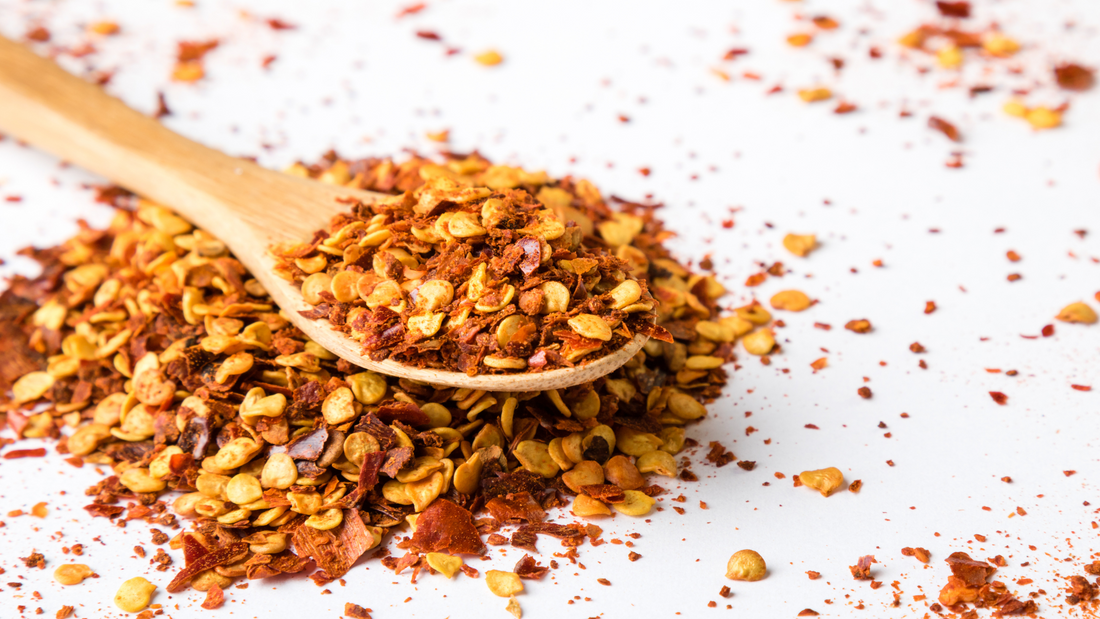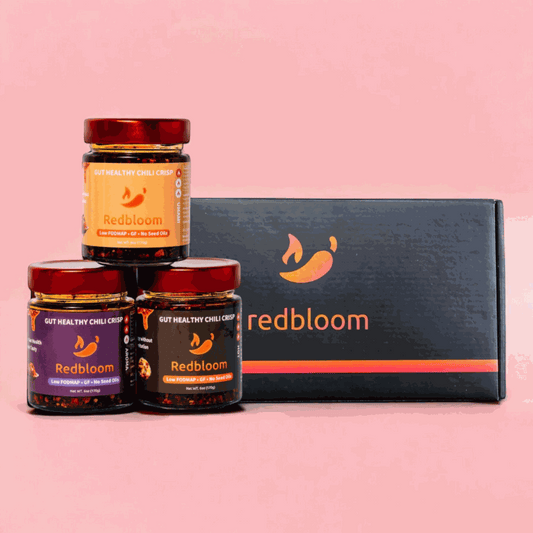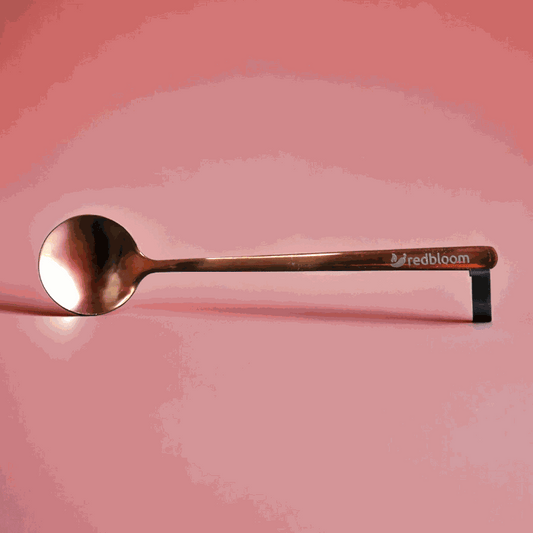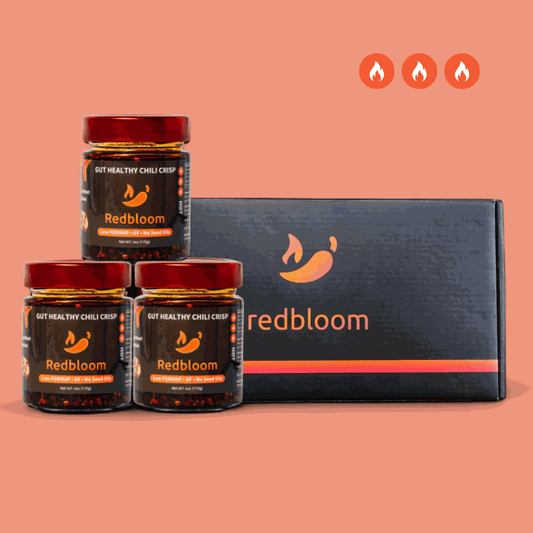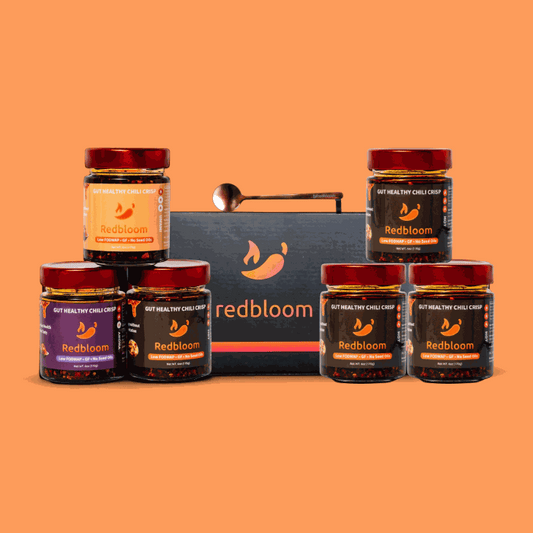Introduction
Sichuan cuisine is famous for málà—the signature combo of spicy chili heat and the tongue-tingling, citrusy numbing sensation. Here’s the key: the heat comes from Sichuan chili flakes made from dried red chiles, while the numb comes from a separate spice, Sichuan peppercorns. Knowing the difference helps you season confidently for a healthy kitchen routine and adjust to your gut and stomach comfort. This guide explains what Sichuan chili flakes are, how they differ from peppercorns, flavor notes, evidence-based health angles on capsaicin, and practical ways to cook with them—plus FAQs to get you started. [1][2][3][4]
What Are Sichuan Chili Flakes?
Sichuan chili flakes (辣椒面 làjiāo miàn or 辣椒粉 làjiāo fěn) are coarsely ground flakes made from sun-dried Chinese red chiles, often including cultivars popular in Sichuan such as Facing Heaven (朝天椒) and Er Jing Tiao (二荆条). They provide color, aroma, and adjustable heat. Unlike Sichuan peppercorns (花椒 huājiāo), chili flakes do not cause numbing; they contribute the là (hot) half of málà. [1][5][6]
-
Made from dried red chiles; seed content influences perceived heat. [1]
-
Common local varieties: Facing Heaven (spicier, sky-pointing pods) and Er Jing Tiao (fragrant, slightly milder). [1][6]
-
Used in oils, sauces, dry mixes, and for finishing to add brick-red color. [1]
Chili Flakes vs. Sichuan Peppercorns (Why “Málà” Tastes Magical)
It’s easy to mix them up, but they’re botanically and functionally different. Chili flakes are Capsicum fruits rich in capsaicin (heat), while Sichuan Peppercorns are dried husks from Zanthoxylum species that deliver numbing via hydroxy-α-sanshool acting on specific ion channels. Together, they create the hallmark málà profile. [2][3]
-
Chili flakes (là): Capsaicin activates TRPV1 heat receptors → spicy burn. [4]
-
Peppercorns (má): Hydroxy-α-sanshool excites neurons by inhibiting two-pore K⁺ channels → tingling/numbness. [3]
-
Use them separately or together depending on the effect you want. [2]
Flavor Profile: Bright Heat, Deep Color
Sichuan chili flakes are prized for clean, fragrant heat and vivid color without heavy smokiness. Depending on chile mix and roast level, you’ll get fruity, slightly toasty notes that lift sauces, noodles, and stir-fries. [1][6]
-
Flakes vary from gently warm to quite spicy; blends balance color, aroma, and heat. [6]
-
Add earlier in cooking for rounder, mellower heat; finish at the end for brighter bite. [1]
Health Notes: Capsaicin, Heat, and Your Gut
Capsaicin—found in all chili peppers—has been studied for metabolic and vascular effects, and for how it interacts with sensory pathways. People respond differently, so scale your portions to what feels healthy for your gut. [4]
-
Research links capsaicin with thermogenesis and possible support for energy expenditure and weight management (evidence varies by study and dose). [4]
-
Sensory activation of TRPV1 explains the heat you feel; tolerance often improves with gradual exposure. [4]
-
If your stomach is sensitive or reflux-prone, start with small amounts in cooked dishes and increase slowly. (General guidance; not a medical diagnosis.)
How to Use Sichuan Chili Flakes
These flakes are versatile across sauces, stir-fries, rubs, and noodles. For classic Sichuan results, pair with a touch of peppercorn for málà. [1][2][5]
Quick Ways to Cook
-
Chili Oil (辣椒油): Pour hot oil over a bowl of chili flakes; optionally add aromatics and a pinch of crushed peppercorns for má. Use as a drizzle for noodles, eggs, or dumplings. [5]
-
Stir-Fries: Bloom ½–1 teaspoon in oil before adding aromatics; finish with a sprinkle to brighten. [1][5]
-
Sauces: Whisk into sesame or soy-based sauces for cold noodles; layer flakes early for color, finish late for a fresh kick. [1]
-
Noodle Dishes (e.g., dandan): Combine flakes with sesame paste, soy, vinegar, and optional peppercorn for balanced málà. [2]
Gut-Friendly Tips
-
Start small (¼–½ tsp per serving) and build to taste.
-
Pair with fats (sesame or neutral oil) to soften sharpness.
-
Choose blends with more Er Jing Tiao for fragrance and gentler heat. [6]
-
If sensitive, use chili oil instead of raw flakes so heat disperses more evenly. [5]
Buying and Storage
-
What to look for: Fresh aroma, bright red flakes, and reputable sourcing. Avoid stale, brownish flakes. [1][6]
-
Variety notes: Blends may include Er Jing Tiao (fragrant/color), Zi Dan Tou (color/aroma), and Xiao Mi La (extra heat). [6]
-
Storage: Keep airtight, cool, and dark. For long-term freshness, refrigerate or freeze to protect color and aroma. [1]
FAQs
1) Are Sichuan chili flakes the same as Sichuan peppercorns?
No. Flakes are dried chiles (heat via capsaicin); peppercorns are Zanthoxylum husks that create numbing via hydroxy-α-sanshool. Use both for classic málà. [2][3][4]
2) Are Sichuan chili flakes spicy?
Yes, but heat level varies by chile variety and blend. You can pick gentler blends or use less to suit your stomach. [1][6]
3) Can I use them outside Chinese cooking?
Absolutely. Use to finish roasted veggies, swirl into chili oil for eggs, or add to vinaigrettes. Start small for gut comfort. [5]
4) How do I make a simple chili oil?
Warm neutral oil, pour over chili flakes in a heat-proof bowl, and let infuse. Optional: aromatics and a bit of crushed peppercorn for má. Strain or leave the solids in. [5]
5) Do Sichuan chili flakes have health benefits?
They contain capsaicin, studied for metabolic and vascular effects, though responses vary. Enjoy in moderation as part of a healthy diet. [4]
Conclusion
Sichuan chili flakes deliver vivid color and adjustable heat—the là—while Sichuan peppercorns bring the signature má. Understanding the difference makes it easy to season boldly and still cook for your gut comfort. Start small, layer flavor thoughtfully, and keep a good blend on hand for effortless weeknight noodles, stir-fries, and dressings.
Bibliography
[1] The Woks of Life. Sichuan Chili Flakes: Chinese Ingredients Glossary. Oct 30, 2022. (The Woks of Life)
[2] The Mala Market Blog. Sourcing Huajiao (Sichuan Pepper, Sichuan Peppercorn). Jun 3, 2014; and related guides on má-là pairing. (The Mala Market)
[3] Bautista DM, et al. Pungent agents from Szechuan peppers excite sensory neurons by inhibiting two-pore potassium channels. J Neurosci. 2008. (PMC)
[4] Zheng J, et al. Dietary capsaicin and its anti-obesity potency. Biosci Rep. 2017. (PMC)
[5] Omnivore’s Cookbook (M. Zhu). How to Make Chili Oil (辣椒油). Apr 23, 2017. (Omnivore's Cookbook)
[6] The Mala Market. Fragrant-Hot Sichuan Chili Flakes (Er Jing Tiao, Zi Dan Tou, Xiao Mi La blend). Product note on blend characteristics. (The Mala Market)

